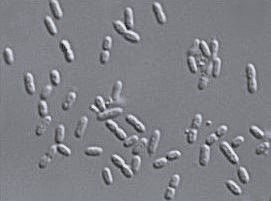Acetic Acid: Nature, Microbes & Health
- Sylvia Rose

- Feb 11
- 5 min read
Acetic acid is well known in cuisine for its pleasantly sour taste and sharp scent. From kitchen vinegar to major functions in ecosystems, acetic acid helps maintain ecological balance and promotes human health.

About Acetic Acid
Acetic acid is an organic compound found throughout nature. It's has connections to microbial life, human health, and environmental vitality.
Also called ethanoic acid, acetic acid is a colorless liquid with the formula CH₃COOH. Store bought vinegar contains 4-6% while artisan or specialty vinegars can range up to 20% acetic acid, sour and biting.
Acetic acid is used in industries like food processing, sanitation and biofuel production. The food industry depends on acetic acid as a preservative and flavor agent in products such as pickles and salad dressings.

Ethanol to Acetic Acid: Microbial Transformation
Acetic acid is a weak carboxylic acid. It can be synthesized chemically, but production often relies on microbial power, especially acetic acid bacteria (AAB) like Acetobacter. These microbes are often found with yeast.
This process, known as acetogenesis, involves the microbial fermentation of ethanol (alcohol) into acetic acid.
Ethanol Breakdown: Specialized bacteria, predominantly acetic acid bacteria, oxidize ethanol in the presence of oxygen.

Acetaldehyde Formation: The initial oxidation converts ethanol into acetaldehyde.
Acetic Acid Production: Acetaldehyde is further oxidized to produce acetic acid.
Acetobacter aceti can convert around 90% of the ethanol into acetic acid during fermentation processes. Besides Acetobacter, species like Gluconobacter partake in fermentation.

They can produce high-quality vinegar from substrates such as wine, sake, and fruit juices. Komagataeibacter xylinus (formerly Gluconacetobacter xylinus) is another popular acetic acid bacterium.
It's known for creating bacterial cellulose as a byproduct. Microbial species often work well together.
During the fermentation of Shanxi traditional Chinese vinegar, a multitude of microbes are found. These include 47 yeast isolates, 28 lactic acid bacteria isolates and 58 acetic acid bacteria at different fermenting times.

Acetic acid can be created through chemical synthesis and biological fermentation.
Chemical Synthesis
Acetic acid can be produced through carbonylation of methanol. In this method, carbon monoxide is combined with methanol in the presence of a catalyst, yielding acetic acid. This process is widespread in industry.
Microbial Fermentation
The common and ancient method is microbial fermentation, where sugars and starches are broken down by bacteria. In making apple cider vinegar for instance, yeast convert sugars to alcohol.

Then, Acetobacter bacteria oxidize alcohol to create acetic acid. This process not only creates acetic acid but produces beneficial compounds like vitamins. Acetobacter spp. are considered potential probiotics.
Acetic Acid and Acetate
In solutions, acetic acid and acetate exist in equilibrium. The balance depends on the pH. Acetate is the conjugate base of acetic acid and is often found in salts like sodium acetate, with pH of 5.2.
Acetate is as a key energy source for cells, enabling metabolic pathways. These convert it to acetyl-CoA. Acetyl-CoA is a structural molecule for fatty acids and is critical in the citric acid cycle, which creates energy for cell functions.

Acetic Acid in Nature
Acetic acid and acetate are integral to the workings of nature. Acetic acid is a signaling molecule affecting the behavior and interactions of some bacteria.
Plant Defense & Pheromones: Some plants release acetic acid as a defense against herbivores or pathogens. Some insects use acetic acid and acetate compounds as pheromones for communication, attraction or defense.
Fruit flies Drosophila melanogaster manufacture acetic acid in their digestive systems. Insects associated with AAB include fruit flies of the Bactrocera oleae species, and mosquitoes of genera Anopheles and Aedes.

The honey bee Apis mellifera supplies acetic acid to honey. Leafhopper Scaphoideus titanus and mealybug Saccharicoccus sacchari associate with with bacterial genera Acetobacter, Gluconobacter and other AAB.
Natural Preservative: The acidic nature of acetic acid inhibits the growth of many spoilage microorganisms, helping to preserve food naturally.
Nutrient Cycling: Acetate is produced during anaerobic decomposition of organic matter, acting as a substrate for other microorganisms in nutrient cycling.

Environment & Health Hazards
Water Acidity: Runoff from industrial processes using acetic acid could potentially acidify water bodies, harming aquatic life.
Skin Irritation: Concentrated acetic acid is corrosive and can cause skin burns and irritation.
Potential Liver Damage: Prolonged exposure or high concentrations of acetic acid could impair liver function.
Air Pollution: Industrial releases of acetic acid vapors can contribute to air pollution. Inhalation of acetic acid vapors can irritate the respiratory tract, with coughing, shortness of breath and pulmonary edema.

Facts About Acetic Acid
Historical Significance: Acetic acid is first identified in the 9th century AD. Long before then, vinegar is use in food preservation and medicine. Dioscorides, physician in the army of Nero, uses vinegar to disinfect wounds.
Glacial Acetic Acid: Pure, anhydrous acetic acid solidifies at temperatures below 16.7°C (62°F) and forms ice-like crystals, hence the name "glacial acetic acid."
Cosmic Acetic Acid: Acetic acid has been detected in interstellar clouds.
Natural Production: Acetic acid is created in the human body during carbohydrate and fat metabolism.
Diverse Vinegar: Different vinegar types, such as apple cider and balsamic vinegar, provide unique flavors due to varying raw materials and fermentation methods.
Safety Precautions: While vinegar is generally safe, concentrated acetic acid must be handled with care because of its corrosive properties.

Non-Fiction Books:
Fiction Books:
READ: Lora Ley Adventures - Germanic Mythology Fiction Series
READ: Reiker For Hire - Victorian Detective Murder Mysteries


